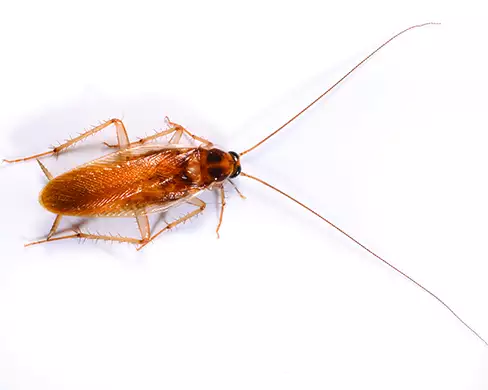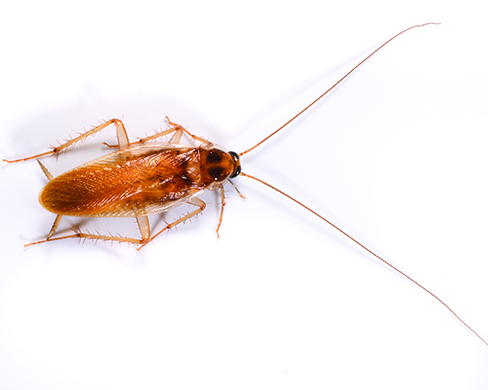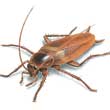- Contact
- 01211118453
- Send Email
- info@spider-eg.com
Brown Banded Cockroach

Brown Banded Cockroach Facts & Information
How to Identify & Control Brown Banded Cockroaches
Latin Name
Supella longipalpa
Appearance
What do they look like?

- Size: one of the smallest of the invasive cockroaches, the adult brown-banded cockroach may reach 11 to 14.5 mm in length.
- Color: These colorful roaches received their name from the light brown or tan transverse bands that are present on the wings of the adult and across the body of the young, or nymphs.
More information about their colors.
How Did I Get Brown-Banded Cockroaches?
These cockroaches need warm temperatures to survive. As a result, they often enter homes looking for shelter, but the most common way that brown-banded cockroaches get inside a home is when infested furniture, food products, grocery items and electronics are brought into the house. Living areas with access to food and ample hiding places are favorite spots for brown-banded cockroaches.
How Serious Are Brown-Banded Cockroaches?
Brown-banded cockroaches will feed on almost anything from trash and pantry goods to nylon stockings, drapes, and wallpaper. Brown-banded cockroach infestations can pose a number of health risks. These roaches have been found to carry and spread harmful bacteria and protozoa which cause gastroenteritis and diarrhea. More commonly, roaches indoors have been found to trigger asthma and allergies. Also, these roaches are able to transfer disease organisms that cause food poisoning and dysentery by contaminating food, cooking utensils and food preparation surfaces.
How do I Get Rid of Them?
The first step in addressing any cockroach infestation is to identify the species correctly. The techniques used to manage one species seldom prove effective when applied to another species. Thus, it is best to contact your local pest control professional if you suspect an infestation.
Facts
Where do they live?
Brown-banded cockroaches prefer dry and warm locations and can be found inside cabinets, pantries and closets. They can also be found in electronic equipment or around refrigerator motor housings. Brown-banded cockroaches can also hide from humans in a variety of places such as clocks and picture frames. They tend to avoid water sources and are more commonly found near the ceilings of infested homes. More information about their habitat.
Nocturnal
Active primarily at night, the brown-banded cockroach may be seen wandering in search of food during the day.
What do they eat?
Brown-banded cockroaches, like other cockroach species, are opportunistic feeders. However, when provided a choice, they have a preference for materials with a higher starch content, such as book bindings, wallpaper glue and stamps.
Life Cycle
An adult brown-banded cockroach can live anywhere from 130 to 315 days, with an average life span of 206 days. During that time, a female brown-banded cockroach will produce approximately 14 egg capsules, or oothecas, during the course of her life. She produces the ootheca, which contains an average of 10 to 18 eggs, carries it for approximately 24 to 36 hours, and then attaches it to the protected underside of a surface until the young hatch. Once the young hatch, the time needed to develop varies greatly depending upon the environmental conditions, ranging from as few as 90 days in ideal conditions or as many as 276 in more harsh environments.

Signs of a Brown-Banded Cockroach Infestation
Primarily Nocturnal
Brown-banded cockroaches are usually nocturnal, or active primarily at night. However, it is not uncommon to spot these insects actively looking for food in the daytime, or scurrying away from the light when a cabinet door or drawer is opened.
Droppings
Brown-banded cockroach infestations can often be identified by the droppings they leave behind. Often found in those areas where the insects frequent, these droppings appear as dark brown or black specks or smears. These fecal spots are used by the brown-banded cockroach to communicate a safe gathering point for other cockroaches in the area. For brown-banded roaches these may be visible along the crown molding of ceilings, around ceiling light fixtures and even behind pictures mounted high on a wall, to name a few.
Egg Capsules
The small, almost 5 mm, egg case may go unnoticed attached to the underside of protected surfaces or within cracks. However, once these cases become dislodged, especially after hatching, the tan egg cases may become visible.

